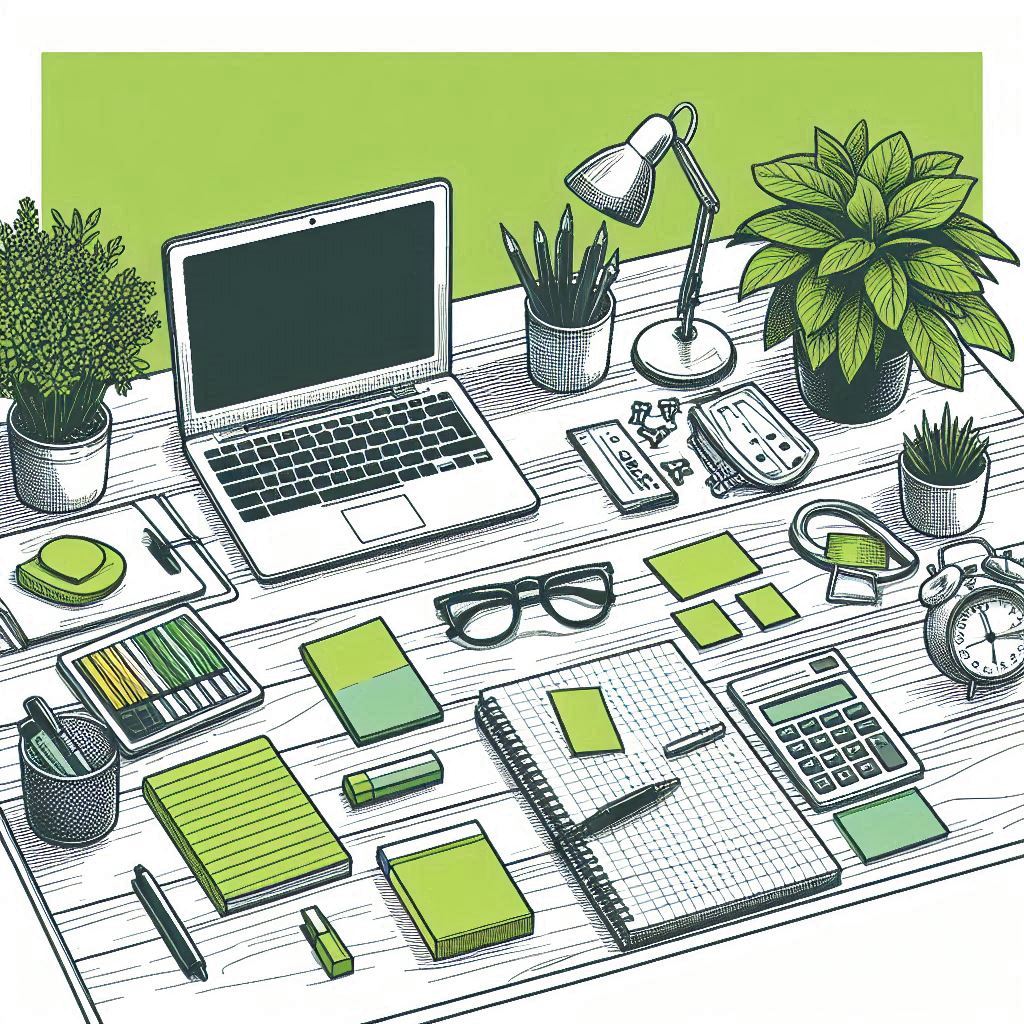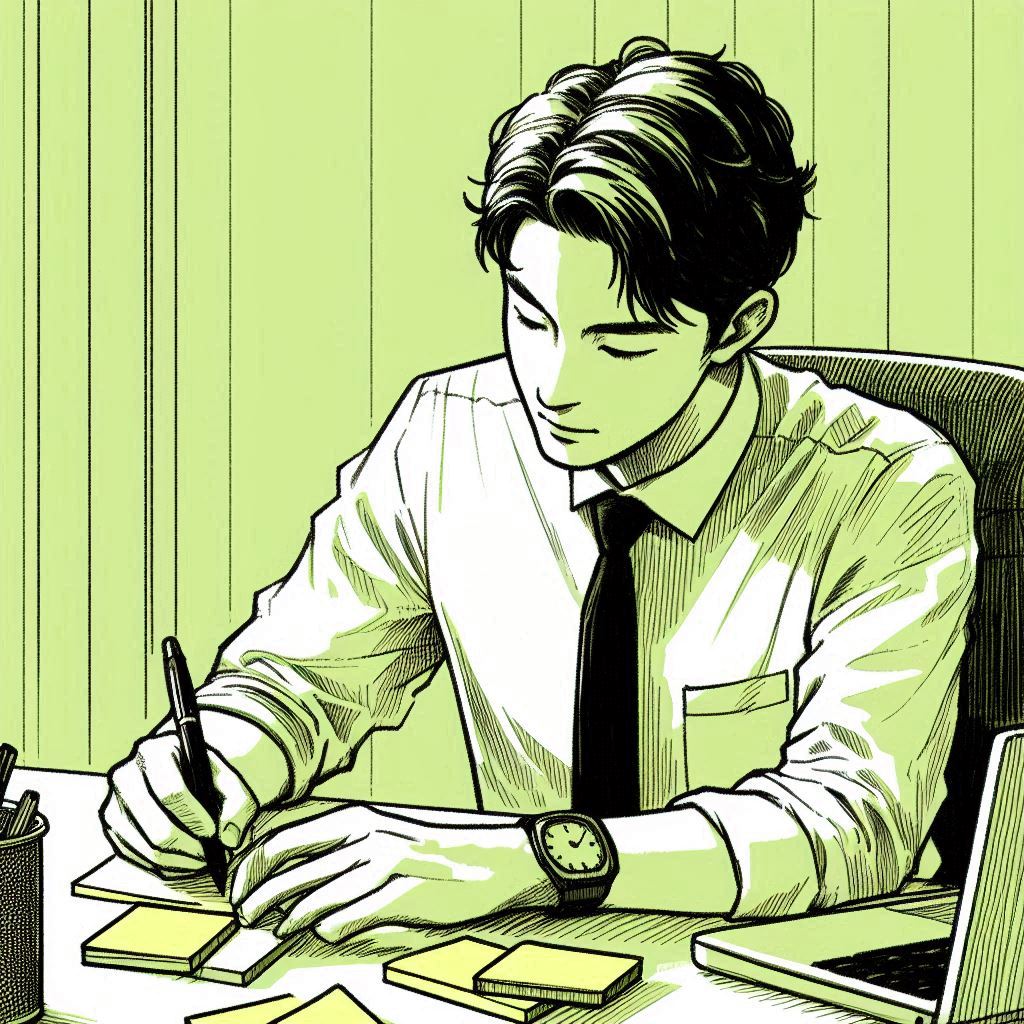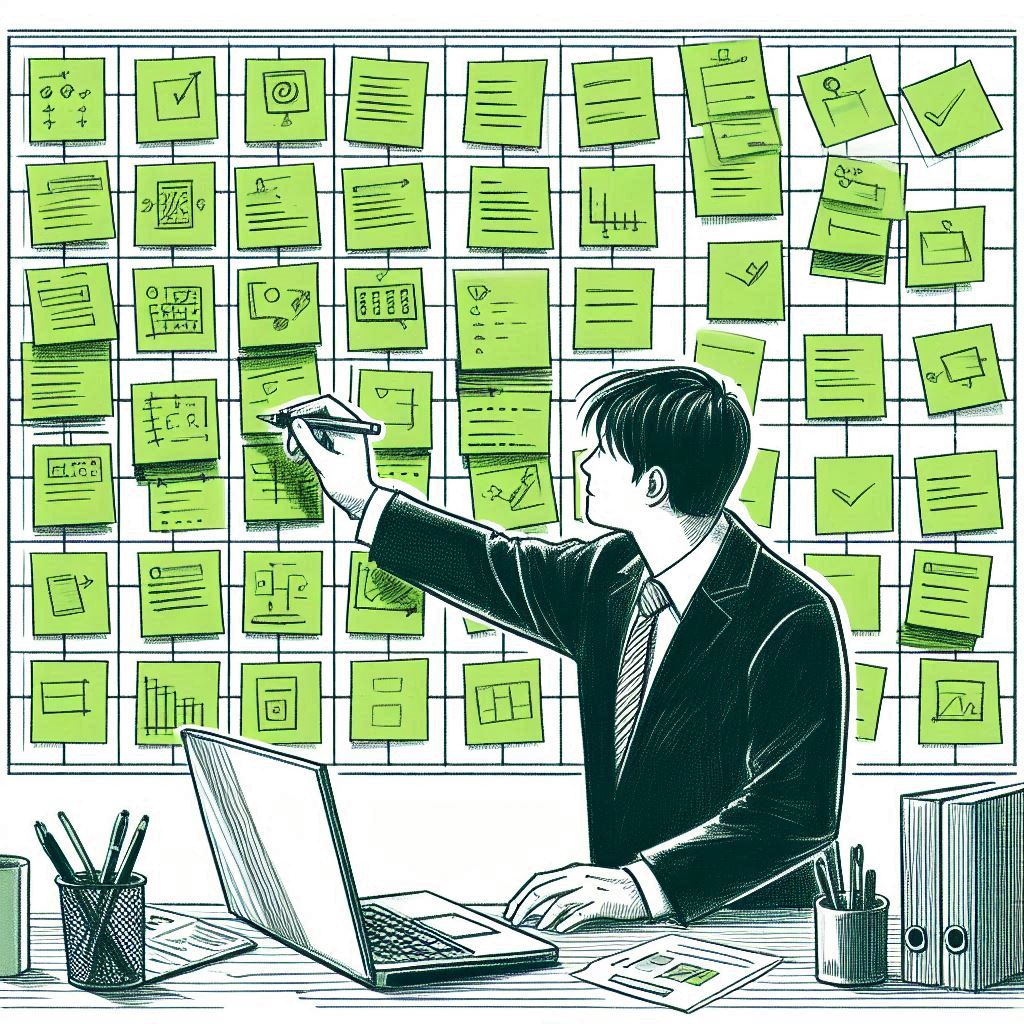Have a schedule instead
If you are reading this, then I’m guessing you have a to-do list of some sort.
To-do lists are awesome, way better than no list – it is the is the cornerstone of the working day for many successful people. There might be a dozen things we need to get to – obviously we should not try to keep it all in our heads. There is a limit on the number of things we can track & we don’t want to be thinking about anything but the task in front of us at any given moment
Get it down on paper, and you can crack on with the task at hand.
We’ll get to the new job…when? ….
…There’s the rub. When do you get to it?
When does this new job get done…?


…When we get around to it.
When you jot it down in your pad it captures WHAT you need to get done but not WHEN you are going to squeeze it into your day. You might have several lengthy tasks plus meetings to fit into 8 hours. Each jostles for priority with everything else when you pick what to do. If you are not careful you will find yourself swamped, with a list that never truly gets blanked-out.
Our goal is to blank-out the list every single day, and finish with a clean slate. It builds positive momentum, and a sense of accomplishment, which fuels our own personal identity as an achiever and problem solver – someone who gets things done. The sense of closure allows us to commute home without loose ends fraying in the back of our minds. It is done – go be a great parent, or gymnast – or painter, or whatever you do when you are not in the office.
The ’What’s Next?’ Gap
If your to-do list is not clearly sequenced you’ll finish a task – look at the jotter, puff your cheeks, and say “well… what next…?” – let’s say you are working your way through 15 items that need doing, some take 5 minutes, some take an hour, you might do the “Well, what’s next?” exercise 10 times or more each day.

These micro-breaks are leaky, they invite interruption, distraction, and time-wasting into your day, and drain your mental energy. Each one is a potential pitfall when you might get tripped up and waste 30 minutes checking your emails, chatting to a colleague or scrolling on your phone. This won’t happen if you are streamlined about it. Let one task lead directly to another seamlessly, and you’ll carry the positive momentum of ticking off one task straight into the next one.

It doesn’t sound draining, does it? Surely just glancing at your to-do list and picking the next one is already pretty seamless? There is more going on than meets the eye. You are asking yourself not only “what is most important?” but also “what do I feel like now?” This is how tasks get bumped from one day to the next to the next. If they are not tasks we relish, are not that urgent, are only somewhat important, they don’t get done at all, or get done when we receive a reminder email or a tap on the shoulder
“How’s that analysis coming along? I asked you for it last week?” – That is not us. Our process is to knock every ball out of the park proactively, promptly, to be a leader by example, to remain on the front foot. We keep our mental workspaces clean & we are not people who end up getting nagged because they kind of hoped the annoying task would just go away.


When we ask ourselves “what’s next” it saps & stretches our self-discipline – ‘can I be bothered?’ ‘I should probably do that one task but can I just roll it into tomorrow?’ That’s when our brains jump in with a ready-made distraction ‘better text your wife back…’ then ‘…since the phone is in your hand now, better just check the news headlines… It’s more efficient than getting the phone out again later…’ after 20 minutes the phone is still in your hand, to-do list is still there.
Don’t give yourself the conundrum. Save the soul searching & position the annoying stuff straight after another job and just before a break, steam straight into it with the momentum & dopamine from having successfully ticked off another task still fresh. Bang, bang, bang. Like Newton’s cradle.
If it still looks unappealing then you may break it in two – promise yourself 20 minutes of focus on it now and to come back to the rest after lunch or 1st thing tomorrow – chances are you’ll finish it in one go, once you have got your teeth into it.

A daily wrap-up
How do you structure this, practically? Instead of the to do-list, where the tasks get added ad-hoc on a jotter as the tasks come in, in no particular order, spend ten minutes at the end of each day setting the tasks into the following day like a conveyor belt of activity – let there be no doubt what’s next, as soon as you have finished your task you know what is next, you know when you have scheduled your next tea break, or bowl of porridge, you can see what you will be doing in two hours’ time.

You can do this electronically with your calendar software like Outlook or GMail, or you an do it on paper if you have an endless supply of mini post-its. Maybe old-fashioned, but personally, I prefer post-Its.

When I wrap up today’s work & set out the day ahead I do it on a whiteboard, marked with the time-slot down the left hand side – Create post-its for meetings and put them in first, then fit today’s and tomorrow’s jobs around them.
The live tasks are all in the desk diary on the right day, but in no particular order, at the end of each day I move them onto the wall chart for tomorrow. Include breaks as well. Once you know yourself, your energy levels, your rhythm, you can schedule intense work in the morning, and more hum-drum time consuming admin in the afternoon. If you have a big project or monthly report to schedule you can position a 90-minute block just after a coffee & make it a head-down headphones-in exercise in 100% intense focus.
Taking ownership of your diary prevents feelings of being overwhelmed, lifts the mental burden of not knowing what you are going to do next, prevents others from gobbling up your time, and makes sure that you get the eye breaks, comfort breaks, and social housekeeping that you need to optimise your day. More importantly, it also ensures that these micro-breaks fall between work tasks, not during. This improves the breaks AND the work.
Bonus – You now have meetings alongside tasks.
You might look at your to-do list – 5 items to complete today – feeling positive ‘I’ll get at one or two finished before lunch, depends how it goes & how I’m feeling’ You get started. Then you get a reminder flash up on your screen you’ve a meeting now
If your meetings are held separately from your tasks it is inevitable this will catch you out at times – part of your daily wrap-up is to add the diary entries for the next day into your schedule for the day. Your tasks fit around them. You have all-day visibility & no surprises
Maintenance
When you get a new task simply add 1 or 2 words to the slip of paper and put it in the diary on the correct page for that day. At the end of your working day review which tasks remain to do today (hopefully none) and carry any remaining slips into tomorrow. Spend 5 minutes putting them into order, along with the meetings and the jobs in the desk diary for tomorrow.
Sometimes you’ll complete a task and email it off but you might expect a response in the next day or two, so you can pop the note back in the diary just as a prompt to follow up, to act upon if you haven’t heard back. Normally once a task is complete you can bin it or curate a ‘discard pile’ which stacks up nicely over the course of the day & can be very satisfying.
Right now
You might want to put the slip for what you are doing RIGHT NOW in a prominent position, like on the monitor, keyboard, or desk. This keeps it front of mind if the phone rings or you get pulled out of what you are doing. Then you are not groping again for what’s next “Where was I…?” back to the to-do list – “ah, that’s important, I should start doing that”
Instead you single-task each until it is done. This conserves your mental energy as you burn through task after task.
When you check your emails for any messages that require action (hopefully not too often – see our post on email notifications), write it on a post-it, stick it in the diary on the day you are going to do it, and minimise your email browser again.
Tasks over-run sometimes, midway through a task the 2PM meeting is due to start and you’ll have to re-jig the notes to slot this in later, but that’s why they are post-its, you can move them when you have to without scribbling out & rewriting. Over time you develop the ability to gauge how long it takes to complete a task, so when a colleague asks you for some work you can provide a timely delivery date without over-promising.


You can even – if you are dealing with a pushy line manager –show that you are serious by literally identifying exactly when you are going to do it, and exactly what running order you have for your tasks. This is a lot more plausible a response than “I’ll get to it when I get to it” or “I’m up against it this week, so it will probably be Thursday” but it also doesn’t mean that you have to crash the diary to say “OK, ok, it’s next on my agenda” when you know you have bigger goals.
Don’t be obsessive about timing every little task.
The fewer tasks there are on your agenda the cleaner you move through the day, the less burdened you are. There’s a mental ‘drag’ effect which you can eradicate by streamlining your tasks & minimising the number of annoying tasks that need to be addressed. By writing it down quickly you are giving your mind permission to forget about it, and your confidence in yourself as somebody who gets things done will mean you won’t fret about buggy little jobs while you are engaged in other tasks that need your attention. It is enough to know that you have allocated yourself on the task later, that you will find 5 minutes to address it during a fallow catchup period when it is appropriate, and it won’t prevent you from committing your whole self to the task in front of you. Crucially, it won’t break your attention & drag you out of your focussed state.
This is a bit like waking from sleep – sometimes, provided the interruption is brief & the effort required is minimal, you can slip straight back into sleep after an interruption. Likewise if you lean across from your screen to scribble a task down you can return to your work smoothly. Think of it as downloaded from your memory onto the pad – you can forget it & it won’t keep buzzing around in there nagging you when you resume your big task, you resume total focus.
Pre-commitment beats procrastination.
Swapping your ‘to-do’ list for ‘when-to-do’ list leverages the power of pre-commitment – do the worst task first. Brian Tracy has a whole book on the value of doing this, called Eat The Frog. While your energy is highest, and before you read your emails and risk being swamped by someone else’s work, get the No.1 thing out of the way which contributes most to winning the day. Commit yourself to something in advance. When you know yourself, and your routines, you’ll know when you are most energetic and least likely to be interrupted.
Without the ‘when-to do’ list you’ll be tempted to push knotty tasks that are not urgent to the back of the day and there’s a chance they end up getting rolled into the next day. Once they roll once it then takes more of your energy to start taking these jobs seriously again & to finally tackle them. If you give work a firm time slot you stop waiting for the stars to align and promising to do it ‘when you get to it’. You are committing to 10:30AM on the 4th. June. It stops slipping back.
Freeing up time
Don’t be alarmed if you schedule all of your work tasks into the diary and there are free hours
In time it is actually inevitable. This is where you want to get to. As distractions find it harder to elbow into the gaps between tasks, as you find yourself more energised by the positive momentum of a clear diary each day, as your stress levels decline & you are working more productively & in a better mood it is natural that you get a lot more done in the same time period. People recognise that you are not a fruitful audience for their interruptions, and you are left alone. Eventually you will certainly end up with more slots than tasks.

The extra time is for long term projects and extra efficiencies. If you can save ten minutes a day then you can certainly save an hour, we cover how to do this elsewhere on this site (Follow this link to find out how) The most important watch-out is this – be protective of your time. Just because there is now more of it, don’t treat it with any less respect. Don’t be volunteered for pointless busy work that does not serve you, and do NOT decide that you can slack off a bit.
At times of the weekly or monthly rhythm naturally our workload waxes & wanes. When you get to the point that your workload no longer takes all 40 hours to complete you are in a privileged position, without a fixed purpose you could be tempted to coast, to prolong busy work, to fill the time with chat, or take your time over the filing – after all, there is plenty of time & you are not going home anyway. In reality every hour you have to spare is concentrated potential, don’t squander it, leverage it to get ahead.


Just knowing what to do next enables you to move smoothly from one task to the next & keep your streak going, without the mental effort of finishing a job, winding down, ticking it off, then winding up again to tackle the next thing & asking yourself what to approach next.
Like driving with a sat-nav, you don’t stop and pull out your map at each junction, you glide smoothly onto the next leg of the journey, prompted automatically. You are in the flow of doing it, having just succeeded at the last job.
Try it for a month and you’ll find that tasks no longer sit in the ‘to do’ pile for a week before grudgingly being completed, you have more mental energy, waste less time, are interrupted less & find single-tasking more natural. Fewer tasks & fewer mental tabs open.
Soon you’ll have enough spare hours to be able to directly plan blocks of time for projects of your own choosing in the workday, to design genuine business solutions, rather than just keeping up. That’s when you can really hit take-off velocity.
